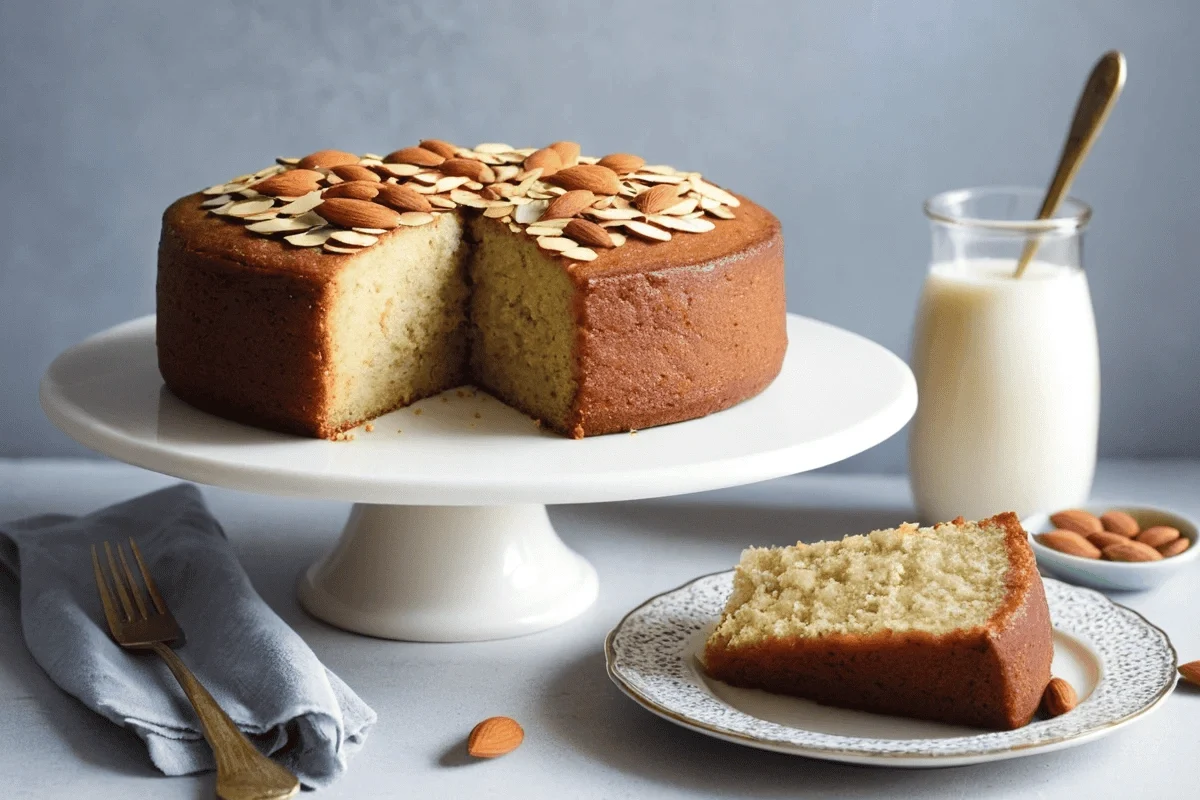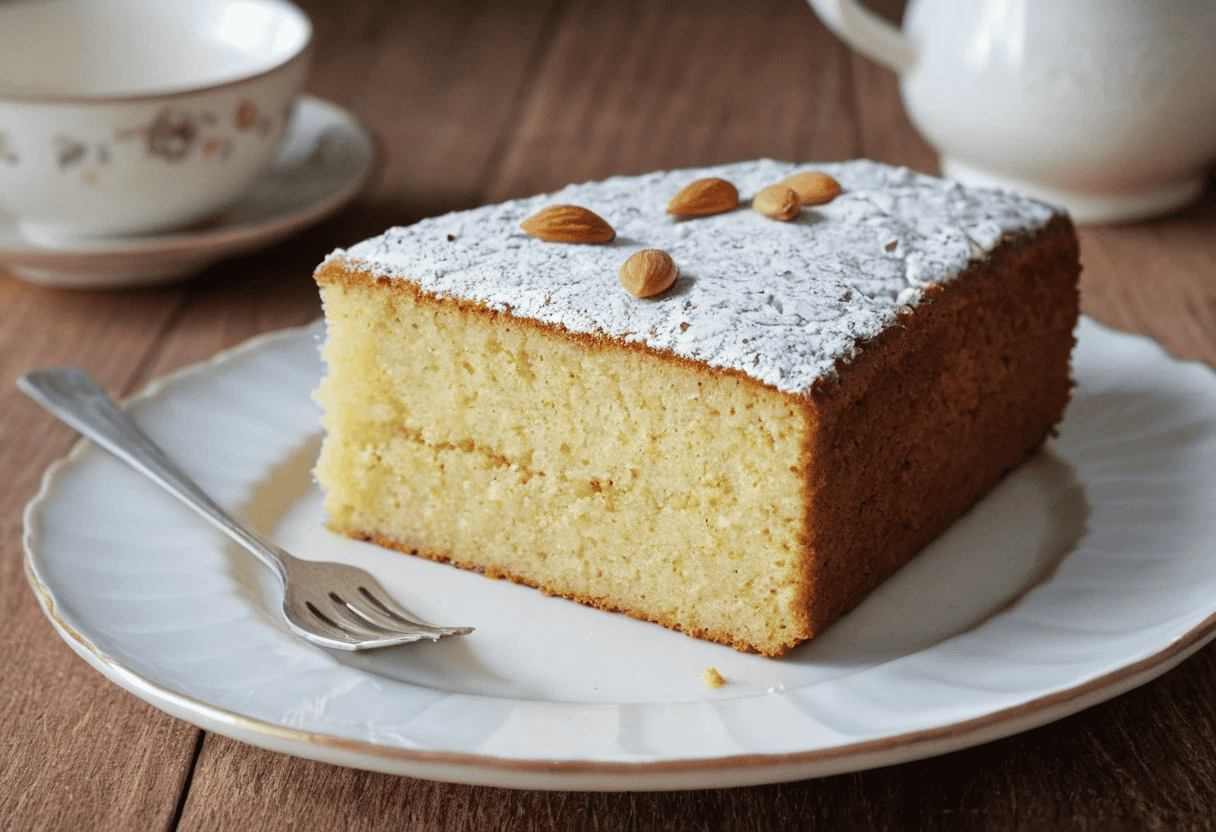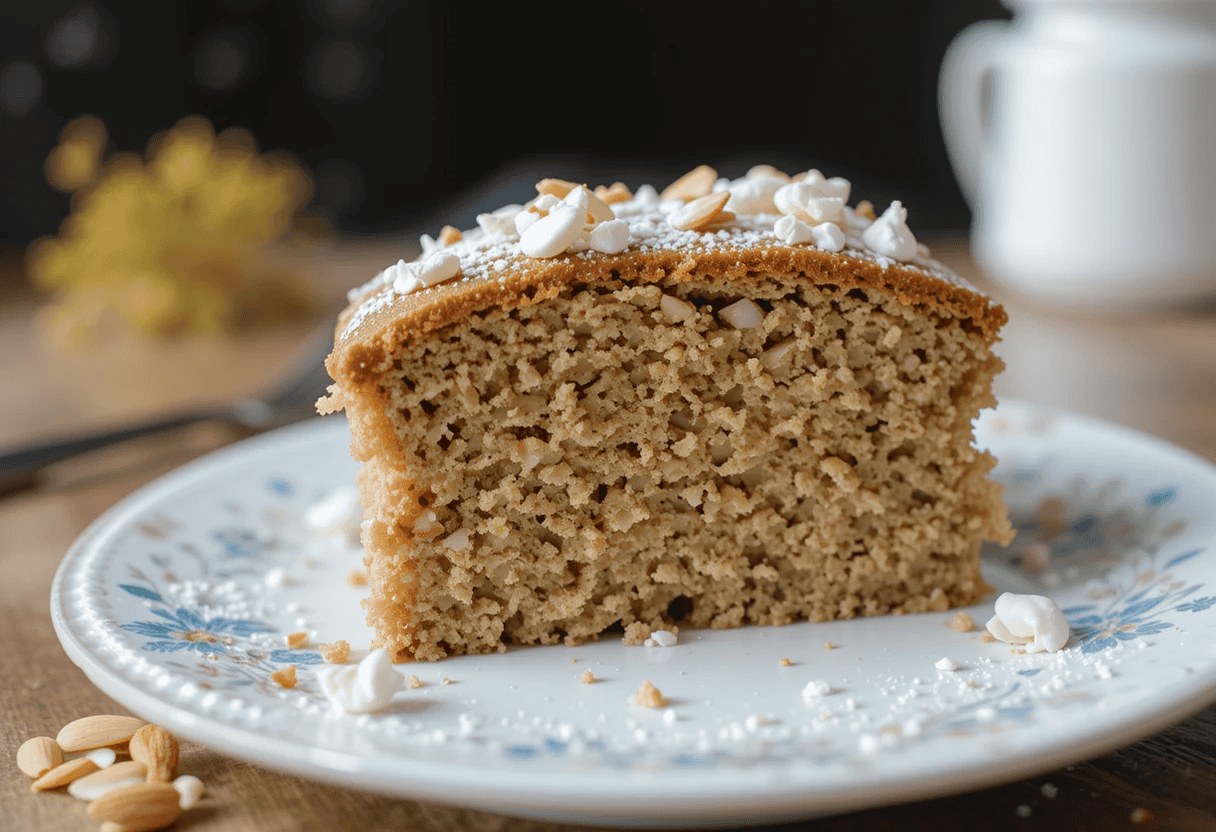Almond meal cake isn’t just a dessert; it’s a delicious and nutritious alternative to traditional flour-based cakes. By substituting almond meal for regular flour, you can craft a cake that’s naturally gluten-free, rich in flavor, and packed with nutrients. In this comprehensive guide, we’ll explore what makes almond meal special, the benefits of baking with it, and how to create a show-stopping almond meal cake from scratch.
What is Almond Meal?
Almond meal is a flour-like ingredient made by grinding whole almonds, including their skins, into a coarse powder. This differs slightly from almond flour, which uses blanched almonds (without skins) and has a finer texture. The inclusion of the skins in almond meal gives it a slightly nuttier flavor and a more rustic appearance, making it a favorite for certain types of baked goods.
Not only is almond meal gluten-free, but it’s also rich in healthy fats, protein, and vitamin E. This makes it a staple in many grain-free and low-carb diets. Whether you’re preparing cakes, cookies, or muffins, almond meal’s natural sweetness and hearty texture can elevate your recipes to a new level. Its versatility allows bakers to experiment with a range of flavors, from citrus and vanilla to chocolate and spices.
For those unfamiliar with almond meal’s nutritional profile, you can find a detailed breakdown here. By understanding the basics of almond meal, you’ll see why it has become an increasingly popular ingredient in healthy baking.
Why Choose Almond Meal for Baking?
There’s a reason almond meal has gained a dedicated following among home bakers and professional chefs alike. Its unique combination of flavor, nutrition, and ease of use makes it an ideal choice for those looking to create more wholesome baked goods. Here’s why you should consider almond meal for your next baking project:
Health Benefits:
- Gluten-free: Perfect for those with celiac disease or gluten sensitivities.
- Low-carb: Almond meal is naturally lower in carbohydrates than wheat-based flours, making it a popular choice for keto and low-carb diets.
- Nutrient-rich: Almond meal provides a boost of healthy monounsaturated fats, protein, fiber, and vitamin E, all of which contribute to overall wellness.
Flavor and Texture Advantages:
- Rich, nutty taste: Almond meal has a naturally sweet, nutty flavor that complements a wide variety of other ingredients, from chocolate to citrus.
- Moist texture: Cakes made with almond meal tend to be denser and more moist, which means they often stay fresh longer.
- Versatility: Almond meal works well in a range of baked goods, from cookies and muffins to pancakes and crusts.
Sustainability and Minimal Processing:
Compared to refined wheat flour, almond meal requires less processing. Since it’s simply ground almonds, it retains much of the nut’s original nutritional value. Plus, almonds themselves are a sustainable crop when sourced responsibly, making almond meal an environmentally friendly choice.
For those interested in further exploring gluten-free baking options, this guide to gluten-free baking offers helpful tips and techniques.
The History and Cultural Significance of Almond Meal Cakes
The use of almonds in baking dates back centuries. Almonds have long been prized for their ability to add richness and depth to desserts, especially in regions where wheat was not always readily available. In fact, almond-based cakes have historical roots in Mediterranean and Middle Eastern cuisines, where almond meal was commonly used to create luxurious desserts for special occasions.
One famous example is the Tarta de Santiago from Spain, a traditional almond cake associated with the pilgrimage to Santiago de Compostela. This cake, often marked with the cross of Saint James, showcases the simplicity and elegance of baking with almond meal. Similarly, in the Middle East, ground almonds have been used for centuries to create dense, syrup-soaked cakes that highlight the nut’s natural sweetness.
In recent years, almond meal cakes have gained popularity worldwide due to the rise of gluten-free and low-carb diets. The demand for alternatives to wheat-based flours has brought almond meal back into the spotlight, not just for health reasons but also for its unparalleled flavor and texture. By tapping into these historical and cultural traditions, bakers today can create cakes that pay homage to their roots while meeting modern dietary preferences.
Step-by-Step Guide: Making a Classic Almond Meal Cake
If you’re ready to dive into baking, this detailed guide will walk you through every step of making a classic almond meal cake. Whether you’re an experienced baker or a complete novice, you’ll find this process simple and rewarding.
Ingredients
Before you begin, gather the following ingredients:
- 2 cups almond meal
- 3 large eggs
- 1/2 cup sugar (or a natural sweetener like honey or maple syrup)
- 1/2 teaspoon baking powder
- 1/4 teaspoon salt
- 1 teaspoon vanilla extract
- Optional: zest of one lemon or orange for added brightness
Instructions
- Preparation:
Preheat your oven to 350°F (175°C). Grease an 8-inch round cake pan and line the bottom with parchment paper. This ensures the cake will release easily after baking. - Mix the Dry Ingredients:
In a medium mixing bowl, combine the almond meal, baking powder, salt, and citrus zest if using. Stir until evenly blended. - Beat the Eggs and Sweetener:
In a separate bowl, whisk the eggs until they’re light and frothy. Add the sugar (or honey) and vanilla extract, and continue whisking until fully combined. - Combine Wet and Dry Ingredients:
Gradually fold the dry ingredients into the wet mixture. Use a spatula to gently mix until the batter is smooth and well combined. Be careful not to overmix, as this can result in a denser texture. - Bake the Cake:
Pour the batter into the prepared cake pan. Smooth the top with a spatula and tap the pan lightly on the counter to remove any air bubbles. Bake for 25–30 minutes, or until the top is golden brown and a toothpick inserted into the center comes out clean. - Cool and Serve:
Let the cake cool in the pan for about 10 minutes before transferring it to a wire rack to cool completely. Once cooled, you can dust the top with powdered sugar or serve it with fresh fruit, whipped cream, or a drizzle of chocolate ganache.
This classic almond meal cake recipe is not only easy to follow, but it also serves as a versatile base for countless variations. Try adding spices like cinnamon or cardamom, or fold in chopped nuts, dried fruit, or chocolate chips to make it uniquely yours.
Tips for Success:
- Use high-quality almond meal for the best flavor.
- Don’t overbake—remove the cake from the oven as soon as it’s golden brown and a toothpick comes out clean.
- Experiment with different toppings and fillings to keep your cakes exciting.
FAQs About Almond Meal Cake
Can almond meal cakes be made vegan?
Absolutely! To make a vegan almond meal cake, you can substitute eggs with flax eggs (1 tablespoon ground flaxseed mixed with 3 tablespoons water per egg). This alternative helps bind the ingredients while keeping the cake moist and fluffy.
Is almond meal the same as almond flour?
No, but they’re closely related. Almond meal is made from whole almonds, including their skins, resulting in a coarser texture. Almond flour, on the other hand, is made from blanched almonds without skins, making it finer and lighter.
Can I substitute almond meal with other flours?
You can, but the results will vary. Coconut flour, for instance, is much more absorbent, so you’ll need to adjust the liquid content. Hazelnut meal can be a good alternative if you want a similar nutty flavor, but the taste and texture will differ slightly.
What’s the best way to store almond meal cake?
To keep your cake fresh, store it in an airtight container at room temperature for up to three days. For longer storage, refrigerate it for up to a week or freeze individual slices for up to a month.
Are almond meal cakes suitable for people with nut allergies?
No, almond meal is made from nuts, so it’s not safe for those with nut allergies. If you’re looking for a nut-free option, consider using coconut flour or sunflower seed flour as substitutes.
Creative Almond Meal Cake Recipes and Variations
Once you’ve mastered the classic almond meal cake, the possibilities for variations are endless. By adding a few different ingredients, you can transform the basic recipe into something new and exciting. Consider these creative takes on almond meal cake:
Lemon-Almond Cake:
- Add 2 tablespoons of lemon juice and the zest of two lemons to the batter.
- Finish with a lemon glaze made from powdered sugar and fresh lemon juice.
Chocolate Almond Cake:
- Stir 1/4 cup of cocoa powder into the dry ingredients.
- Add a handful of chocolate chips for extra richness.
Berry Almond Cake:
- Fold fresh or frozen berries, such as raspberries or blueberries, into the batter.
- Top with a simple berry compote for a burst of fruity flavor.
Spiced Almond Cake:
- Mix in warm spices like cinnamon, cardamom, and nutmeg for a cozy flavor.
- Pair with a cream cheese frosting or a dusting of powdered sugar.
With these variations, you can enjoy a different almond meal cake every time you bake. By experimenting with flavors, add-ins, and toppings, you’ll never run out of ways to enjoy this versatile dessert.




